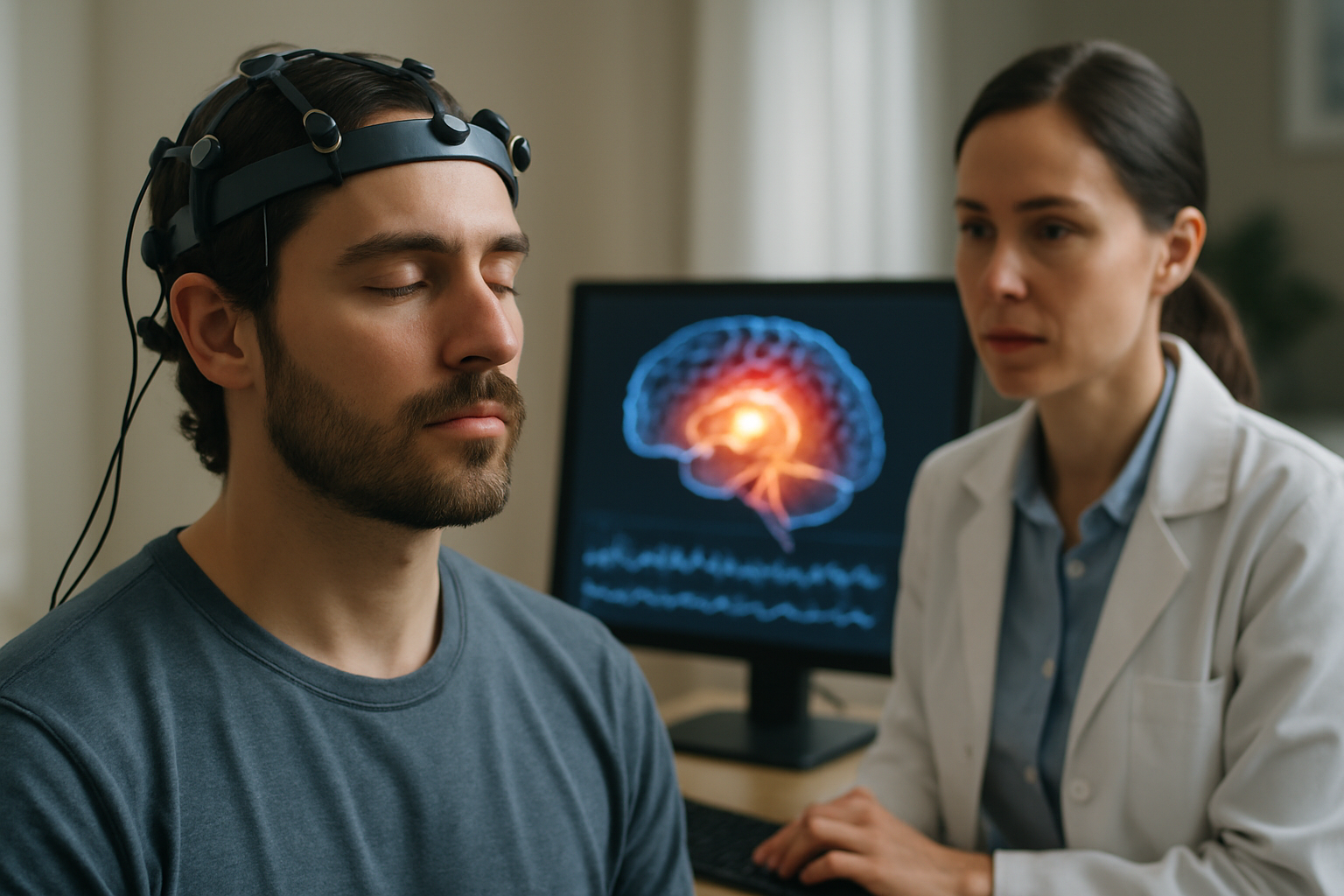Exploring the Healing Power of Neurofeedback: Rewiring the Brain for Optimal Health
The human brain, a complex network of billions of neurons, orchestrates our every thought, emotion, and action. But what if we could tap into this intricate system, understanding its rhythms and patterns to enhance our overall well-being? Welcome to the world of neurofeedback, a cutting-edge approach that's revolutionizing our understanding of mental health and cognitive performance. Can we truly train our brains for better health? Let's delve into this fascinating field and uncover its potential.

The foundation of neurofeedback lies in the brain’s neuroplasticity—its ability to form new neural connections and reorganize existing ones. This adaptability enables the brain to learn and change throughout life, forming the basis for neurofeedback’s therapeutic potential. By repeatedly practicing to achieve certain brainwave states, individuals can strengthen neural pathways associated with desired mental states, such as focus, relaxation, or emotional regulation.
Applications in Mental Health
One of the most promising areas for neurofeedback is in the treatment of mental health disorders. Research has shown encouraging results in addressing conditions such as anxiety, depression, and ADHD. For instance, individuals with anxiety disorders may learn to increase their alpha brainwave activity, associated with a calm and relaxed state, potentially reducing symptoms of excessive worry and tension.
In the case of ADHD, neurofeedback protocols often focus on enhancing beta waves (linked to focused attention) while reducing theta waves (associated with daydreaming). This approach aims to improve concentration and reduce impulsivity, offering a drug-free alternative or complement to traditional treatments.
Cognitive Enhancement and Performance Optimization
Beyond treating specific disorders, neurofeedback has gained attention in the realm of cognitive enhancement. Athletes, executives, and performers are exploring its potential to sharpen focus, boost creativity, and improve overall mental acuity. Some studies suggest that neurofeedback training can enhance working memory, processing speed, and even artistic performance.
For instance, a study involving musicians found that neurofeedback training led to improvements in musical performance, particularly in areas requiring high levels of concentration and fine motor skills. This highlights the technique’s potential not just for addressing deficits, but for optimizing already high-functioning individuals.
Sleep and Stress Management
Sleep disorders and chronic stress are pervasive issues in modern society, often intertwined and contributing to a wide range of health problems. Neurofeedback offers a unique approach to addressing these concerns by targeting the brain’s regulatory mechanisms directly.
For those struggling with insomnia or disrupted sleep patterns, neurofeedback protocols can focus on enhancing slow-wave activity, crucial for restorative sleep. By learning to modulate their brainwave patterns, individuals may improve their ability to fall asleep, stay asleep, and wake feeling more refreshed.
In stress management, neurofeedback can teach individuals to activate their parasympathetic nervous system more effectively, promoting a state of calm and relaxation. This skill can be particularly valuable in high-pressure situations, allowing for better emotional regulation and resilience in the face of stress.
The Future of Neurofeedback: Challenges and Opportunities
As promising as neurofeedback appears, it’s important to acknowledge that the field is still evolving. While many studies show positive results, more rigorous research is needed to fully understand its efficacy across different applications and populations. Standardization of protocols and equipment remains a challenge, as does the need for trained professionals to administer and interpret neurofeedback sessions effectively.
Looking ahead, advancements in technology are opening up exciting possibilities for neurofeedback. The development of more sophisticated EEG devices, including wearable options, could make neurofeedback more accessible and integrated into daily life. Additionally, the combination of neurofeedback with other emerging technologies, such as virtual reality or artificial intelligence, may unlock new therapeutic and performance-enhancing potentials.
Brainwave Basics: Understanding Your Mental Rhythms
- Delta waves (0.5-4 Hz): Associated with deep sleep and healing
- Theta waves (4-8 Hz): Linked to creativity, meditation, and memory
- Alpha waves (8-13 Hz): Indicate relaxation and calmness
- Beta waves (13-30 Hz): Present during active thinking and focus
- Gamma waves (30-100 Hz): Related to high-level information processing
In conclusion, neurofeedback represents a fascinating frontier in our quest for better health and cognitive performance. By harnessing the brain’s innate ability to learn and adapt, this technique offers a unique approach to addressing a wide range of mental health concerns and optimizing cognitive function. As research continues to unfold and technology advances, neurofeedback may well become an integral part of our holistic approach to health and wellness, empowering individuals to take an active role in shaping their mental landscape.





